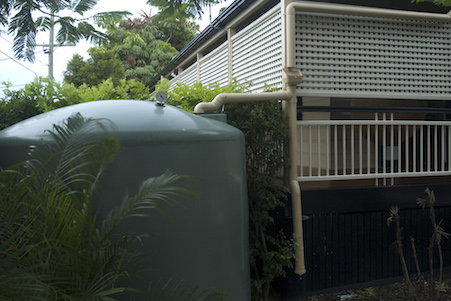
What are rain gutters?
A Rain gutter is a narrow channel, or trough, forming the component of a roof system which collects and diverts rainwater falling on the roof. They run horizontally along the length of the roof eave and catch rainwater before it can splash onto the ground. A complete rain gutter system will include downspouts or pipes that run vertically to the ground from the roof gutters, delivering rainwater from the roof gutters quietly to ground level.
RainWaterSolutions has formed strategic partnerships to provide the highest quality British manufactured and certified UPVC rain gutters into the West African market through our operations in Ghana. Our products have been tested to meet the demands of the African climate and volumes of rainfall we experience.
 Our Rain Gutters
Our Rain Gutters
RainWaterSolutions gutters have been specially selected to cater for the requirements of the African climate. Our gutters are manufactured by Floplast a UK leader in the field of Plastic Building and plumbing systems. As their dedicated distributed of their products we have a developed key markets for a wide range of products manufactured by Floplast.
All our gutters have been rigorously tested and provide maintenance free solutions to both domestic and commercial buildings..
Learn More… Accessories
Accessories
Installation starts with the dispatch of materials from our warehouse. Each installation is handled by a skilled team of installers under the guidance of a team lead, who has years of experience in the field.
The client’s input is sort at key points during the installation such as positioning of outlet pipes around the property. On completion, the finished work is inspected by a senior inspector to confirm the work has been executed to the exacting standards we hold ourselves to.
RainWaterSolutions will be on hand to service any further needs of the client relating to the gutter installation.
Learn More…Benefits of Installing Rain Gutters
 Rainharvesting
Rainharvesting
Rain Gutters enable the harvesting of rainwater from the roofs on buildings. Fresh water is an increasing scarce and expensive resource. Rainwater can be collected as it falls onto roofs and stored for use in the home or garden. By harvesting rainwater we also help reduce the incidence of flooding as well as reducing our use of precious treated mains water. Since rainwater has no chlorine in it, it is great for watering and irrigation and animals also prefer to drink rainwater.
Additional benefits of harvesting rainwater include:
Reduced mains water costs – rainwater is free
No minerals, no limescale resulting in increased appliance life and reduced cleaning costs.
Rainwater collected from roofs can be used in:
Toilet flushing
Washing machines
Garden watering
Rainwater is suitable for use in homes, public buildings, commerce and industry.
Gutters Prevent Soil Erosion.
Water that falls uncontrolled from a rooftop has to go somewhere and will look for slopes to flow down. In a heavy rain, the high volume of water flowing off the roof falls and looks to flow away from the house eroding the dirt around the house and reaching the foundations of the house. By reducing the amount of water entering the soil that surrounds the house you limit the soil’s ability to expand and contract, thus providing a more steadfast base for your home.
 Keep Foundations Stable.
Keep Foundations Stable.
Water sitting near a foundation wall, will eventually work its way under the foundation, causing it to settle. The walls on the settled part of the foundation can then separate from the rest of the house. This will result in the floor of the building moving and resulting in uneven floors in the building.
Houses Stay Neater.
Water falling from the edge of a roof will fall as a sheet of water as it is the accumulation of water on the roof. This sheet of water falls to the ground with pressure and splashes of the surface it falls on. Depending upon the ground surface it falls on, it will splash around. If there is soil on the ground this will be loosened and potentially holes in the soil will be created where the water falls. It can splash dirt on the lower part of the exterior walls as it strikes the ground. It can also harm flowers and delicate shrubs and break down mulch.
People Stay Dryer.
Gutters prevent water from flowing directly off the roof and over entrances to the home and porch. They keep people dry as they enter and leave the home. Even a light rainfall can create a sheet of water that runs off the edge of the roof. When this occurs the volume of water falling of the roof is heavier than that falling directly from the sky.
Gutters Prevent Rot in Fascia.
Houses without gutters are more likely to experience wood rot on the fascia and soffit as water exiting the roof finds the little openings in the paint and caulking of the fascia attacks the wood. Properly installed and maintained gutters will keep water away from wood and funnel it to the ground through downpipes into the storm water system.
Keep Basements Dry.
The most important task of a gutter is to funnel water away from basement walls. Water that falls from a roof can saturate the ground near the foundation. Over time, the water will find its way down and through the foundation walls due to hydrostatic pressure. The will result is cracks and water damage in any walls below ground level ie basement walls, and eventually may result in flooding in the basement. Even without cracks, sitting water around the walls of the building can soak through the basement walls and result in a buckled foundations requiring costly repairs to maintain the building.

